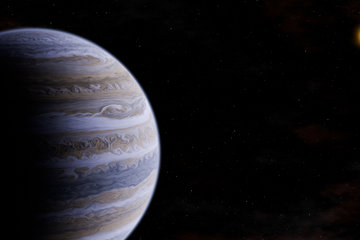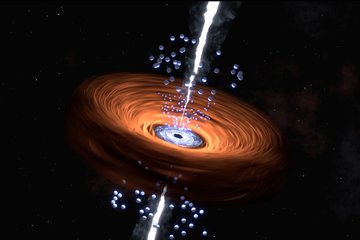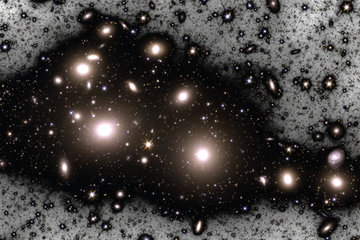Three-detector observation of gravitational waves
The cosmic ripples were not only observed by the two Ligo observatories in the USA, but also the Italian detector Virgo
The observation of gravitational waves is gradually becoming routine. Once again, researchers have recorded the ripples of space-time predicted by Albert Einstein a hundred years ago. But this time, next to the two US Advanced Ligo observatories, which detected all three gravitational waves recorded so far, the Italian Advanced Virgo detector was also involved. On August 14, at 12:30:43 pm CEST, all three detectors observed a gravitational wave signal, known as GW170814, generated by two coalescing black holes.

Researchers at the Max Planck Institute for Gravitational Physics at the Hanover and Potsdam sites were delighted with the results. “Gravitational wave astronomy is rapidly advancing. With a third large detector, we can even more accurately determine the position and distance of the gravitational wave sources“, says Alessandra Buonanno, and her two co-directors Bruce Allen and Karsten Danzmann. “We can thus search more efficiently for electromagnetic and astroparticle counterparts of the sources and together advance into the new era of multi-messenger astronomy”.
In the case of GW170814, a total of 25 astronomical observatories searched for electromagnetic radiation in the gamma, optical, infrared, x-ray, and radio wavelength ranges, as well as for neutrino emissions. None of the instruments observed any signal but this is expected for stellar-mass black holes.
The two cosmic monsters had about 31 and 25 solar masses. The resulting black hole has 53 solar masses - three solar masses were translated into gravitational waves. The signal arrived at the LIGO Livingston detector about 8 milliseconds before the LIGO Hanford detector and about 14 milliseconds before the Virgo detector in Tuscany. From this combination of arrival time delays, the direction towards the source can be determined.
The researchers succeeded in localizing GW170814 to a patch of 60 square degrees in the southern celestial hemisphere between the constellations Eridanus and Horologium. By comparing the measured waveform with predictions from the General Relativity Theory, scientists could estimate the distance to the black holes of about 1.8 billion light years.
Researchers from the Max Planck Institute from the Gravitational Physics in Hannover and Potsdam were also involved in the wave form modeling, detection and analysis of the event. For example, Karsten Danzmann has been operating the GEO600 Collaboration, a team of Max Planck, Leibniz Universität Hannover and UK researchers, since the mid 1990s. GEO600 is a development center for novel and advanced technologies in the international gravitational-wave research community.

Max Planck researchers together with the Laser Zentrum Hannover e.V. developed, built, and installed the high-power laser systems at the heart of the LIGO instruments. Crucial improvements in the optical measurement principle such as power and signal recycling were first demonstrated at high sensitivity in GEO600.
Members of the “Observational Relativity and Cosmology” division at the Max Planck Institute in Hannover analyzed Virgo data to estimate the probability that the weak Virgo signal is caused by random noise fluctuations. They found the signal to be real with a probability of more than 99%. They also developed methods to clean the LIGO data from instrumental artifacts, and thereby significantly increased the LIGO sensitivity.
In addition, members of the "Observational Relativity and Cosmology" division developed and implemented many of the algorithms and software used in the analysis of the LIGO data. These analyses were used, for example, to establish the statistical significance of GW170814 and to determine its parameters. In addition, about 40% of the ongoing LIGO data analysis of data from the second science run “O2” was performed on the Atlas supercomputer operated by the division.
As with previous ground-breaking gravitational-wave observations the role of the "Astrophysical and Cosmological Relativity" division of the Max Planck Institute in Potsdam was crucial in observing and interpreting GW170814. A significant contribution was in developing and using the most accurate waveform models to both search for and characterize the source of GW170814. These models enabled scientists at the Institute in Potsdam, and LIGO-Virgo collaboration members, to measure the high significance of this observation, which used for the first time the full LIGO-Virgo network of three large detectors.
As part of the follow-up analysis, waveform models developed by scientists at the Max Planck Institute localized the source in the sky and identified it as a pair of orbiting black holes. Members of the division in Potsdam have continued to improve waveform models including new physical effects, such as eccentricity and tides for neutron stars, to shed light on binary’s formation scenarios and matter at extreme conditions with future observations.
EM / KNI / HOR













